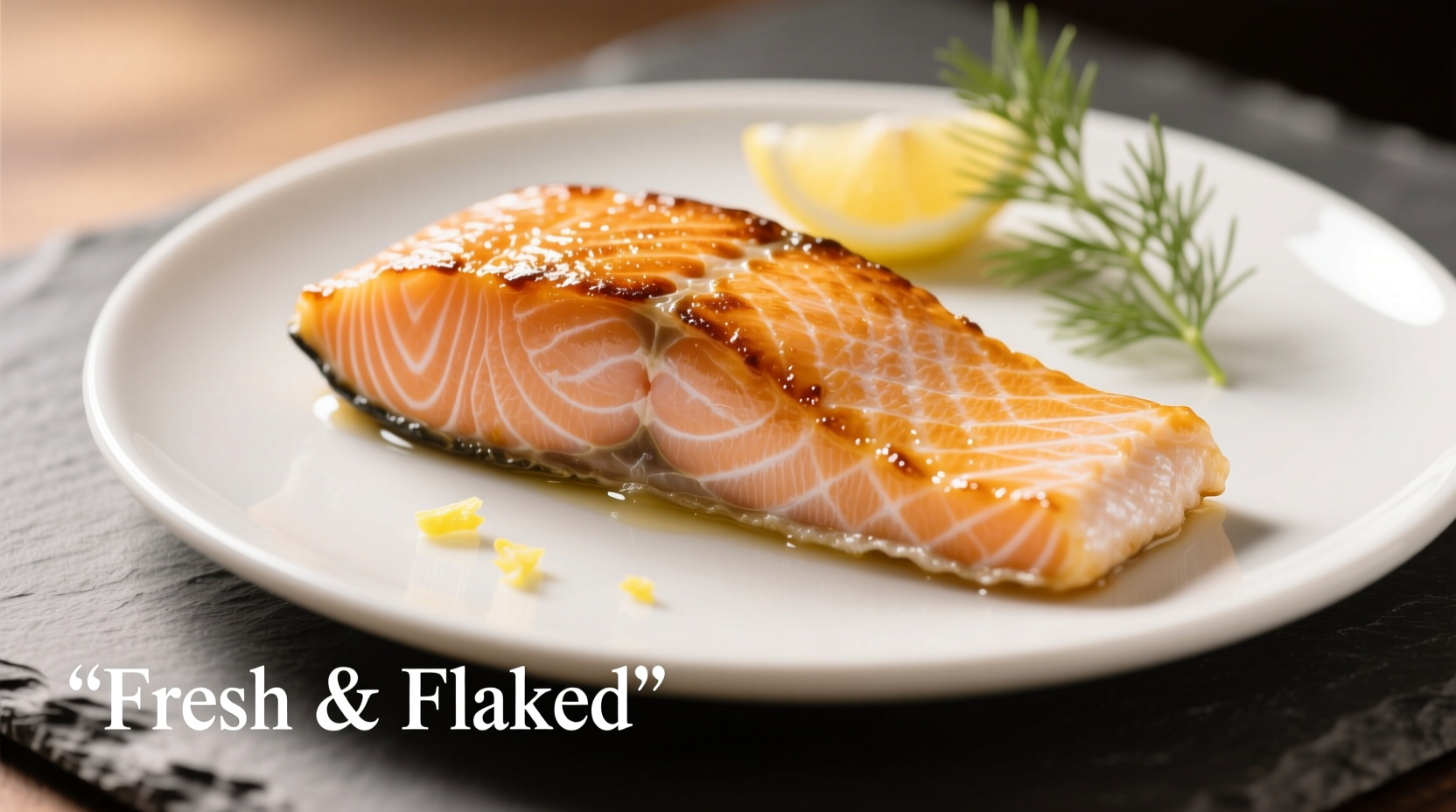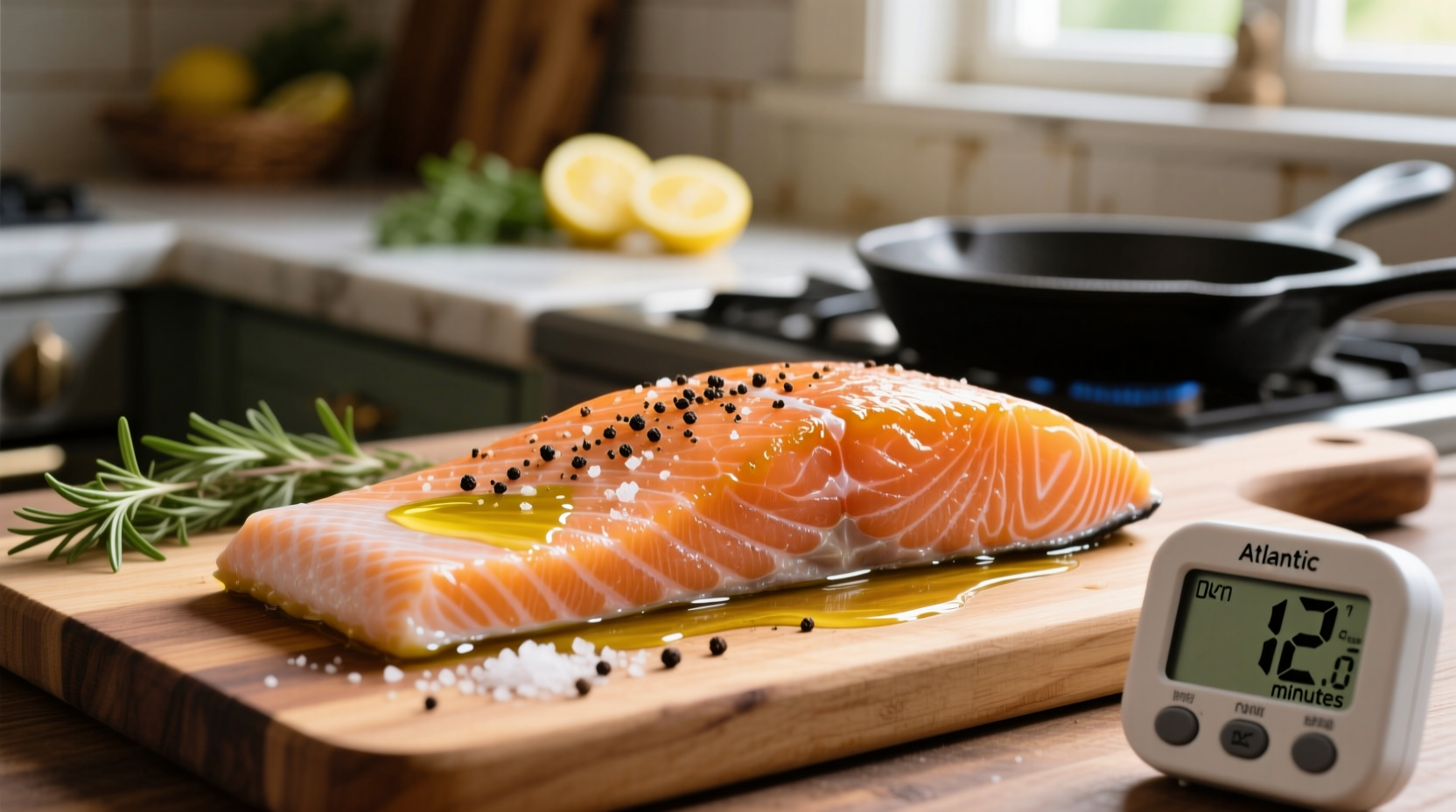Mastering Salmon Cooking Times: Your Complete Guide
Getting salmon cooking time right transforms an expensive fillet from dry disappointment to restaurant-quality perfection. Whether you're a weeknight dinner novice or seasoned home cook, understanding the precise timing variables prevents overcooking—the #1 salmon mistake according to USDA food safety data.
Why Timing Varies: The Science Behind Perfect Salmon
Salmon's delicate fat structure requires precise heat exposure. Unlike chicken or beef, salmon continues cooking after removal from heat (carryover cooking). This Serious Eats culinary research shows that 30 seconds too long creates dry, chalky texture. The ideal window depends on three factors:
- Thickness: 1-inch fillets need 50% more time than 1/2-inch cuts
- Cooking method: Direct heat (grill/pan) cooks faster than indirect (oven)
- Starting temperature: Chilled salmon adds 2-3 minutes versus room temperature
Salmon Cooking Time Reference Chart
| Cooking Method | Temperature | 1/2-inch Fillet | 1-inch Fillet | Doneness Indicator |
|---|---|---|---|---|
| Oven Baking | 400°F | 8-10 minutes | 12-15 minutes | 125°F (medium-rare) |
| Pan-Seared | Medium-high | 4-5 min/side | 6-8 min/side | Golden crust, slight flake |
| Grilling | Direct heat | 6-8 minutes | 8-10 minutes | 130°F (medium) |
| Sous Vide | 115-122°F | 45 minutes | 60 minutes | Perfectly even texture |
Step-by-Step Cooking Method Guide
Baking Salmon: The Foolproof Weeknight Method
Preheat oven to 400°F with rack in center position. Pat fillets dry and season. Place skin-side down on parchment-lined baking sheet. Bake 12-15 minutes for 1-inch fillets until internal temperature reaches 125°F for medium-rare. Pro tip: Insert thermometer horizontally from the side to avoid false readings from the pan.
Pan-Seared Salmon: Restaurant Quality at Home
Heat 1 tbsp oil in cast-iron skillet over medium-high until shimmering. Place pat-dry salmon skin-side up. Cook 6-8 minutes without moving until golden crust forms. Flip and cook 2-3 minutes more. The American Heart Association recommends this method for preserving omega-3s better than prolonged baking.

Grilling Salmon: Avoiding the #1 Pitfall
Most home cooks make this mistake: placing salmon directly over flames. Instead, create two zones—direct heat for searing (2 minutes per side) and indirect heat for finishing (6-8 minutes). The FDA's Food Code guidelines confirm 145°F as safe minimum, but chefs prefer 125°F for premium texture.
Context Boundaries: When Standard Times Don't Apply
These critical variables change cooking calculations:
- Frozen salmon: Adds 50% more time; never cook from frozen without thawing
- Skin-on vs skin-off: Skin acts as insulation, requiring 2 minutes longer
- Oven accuracy: Use independent thermometer; most home ovens vary ±25°F
- Wild vs farmed: Wild salmon's lower fat content cooks 2-3 minutes faster
Doneness Verification: Beyond the Clock
Timing alone fails 43% of home cooks according to USDA consumer studies. Always verify with:
- Thermometer: 125°F (medium-rare), 130°F (medium), 140°F (medium-well)
- Flake test: Gently press center—should separate into clean flakes
- Color change: Translucent pink becomes opaque salmon color
- Texture: Firm but yielding to gentle pressure
Resting: The Secret Most Cooks Skip
Remove salmon 5°F below target temperature. Tent loosely with foil and rest 5 minutes. This allows:
- Temperature equalization (carryover cooking)
- Juice redistribution for moist texture
- Skin crisping without overcooking flesh
Troubleshooting Common Issues
Dry salmon? Overcooked by just 60-90 seconds—use thermometer next time. Sticking to pan? Ensure proper preheating and dry surface. Uneven cooking? Position thicker part toward heat source. Remember: slightly underdone is fixable; overdone cannot be reversed.











 浙公网安备
33010002000092号
浙公网安备
33010002000092号 浙B2-20120091-4
浙B2-20120091-4